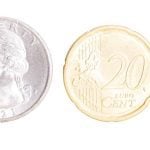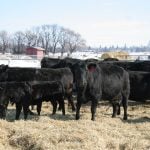REGINA Ñ The 80 foot Seed Master air drill attracted a lot of attention at this yearÕs Farm Progress Show. As possibly the largest direct seeding drill available commercially for sale in North America, the size means it comes with some unique design
concerns.
Norbert Beaujot, president of Straw Track in Regina, said such a wide drill creates bracing concerns within the wing frame.
ÒWhat happens when you try to weld in a member is it becomes critical at the ends of where itÕs welded. That tends to break out over the years. YouÕll start a fracture right at the weld location,Ó said Beaujot.
Read Also

VIDEO: Ag in Motion documentary launches second season
The second season of the the Western Producer’s documentary series about Ag in Motion launched Oct. 8.
ÒWhen you weld it in, you donÕt know what kind of forces youÕre designing it for. They can be temporarily very high. With an active brace, you know exactly what forces youÕre dealing with because youÕre dialing that force in.Ó
The brace is composed of a long cable attached to the front corner of the wing that crosses diagonally to a hydraulic cylinder at the back opposite corner of the wing section.
Beaujot said in softer soil the drill doesnÕt pull as hard, while in harder soil it pulls harder. The operator typically adjusts the down pressure of the openers depending on soil conditions. The brace cylinder is plumbed into the same active hydraulics as the openers.
ÒWe call it an active wing brace because as you put the machine through harder or softer soil, the farmer automatically adjusts his force. You adjust the penetrating force with a button from the cab that affects all the openers at once. We use that same force as a brace so itÕs always matching the draft of the openers,Ó said Beaujot.
ÒIt makes it a very smart brace because it only pulls the amount that you want. A normal brace is rigid and it creates a bunch of additional problems. You turn something that has some natural flexibility to it into something that is completely rigid and has high shock loads. This can still absorb shock. The brace is extending and retracting a slight amount to always maintain the same force on the brace.Ó
When filing for patents, Beaujot said he hit a broad coverage because there hadnÕt been anything like this, so it has many possibilities. But his need was just for the long wings themselves.
ÒItÕll be built right into the bigger machines. It worked out to be a very economical device. ThereÕs not much of a cost. These are put on drills worth more than $100,000, so when youÕve got something that (costs) a couple of hundred dollars, you just do it,Ó he said.
ÒWeÕre building a lot of big drills. It seems to be the way of the future. We sell very few drills now under 50 feet. I think weÕll be putting it on all drills over 50 feet, in that 50 to 80 foot bracket.Ó














